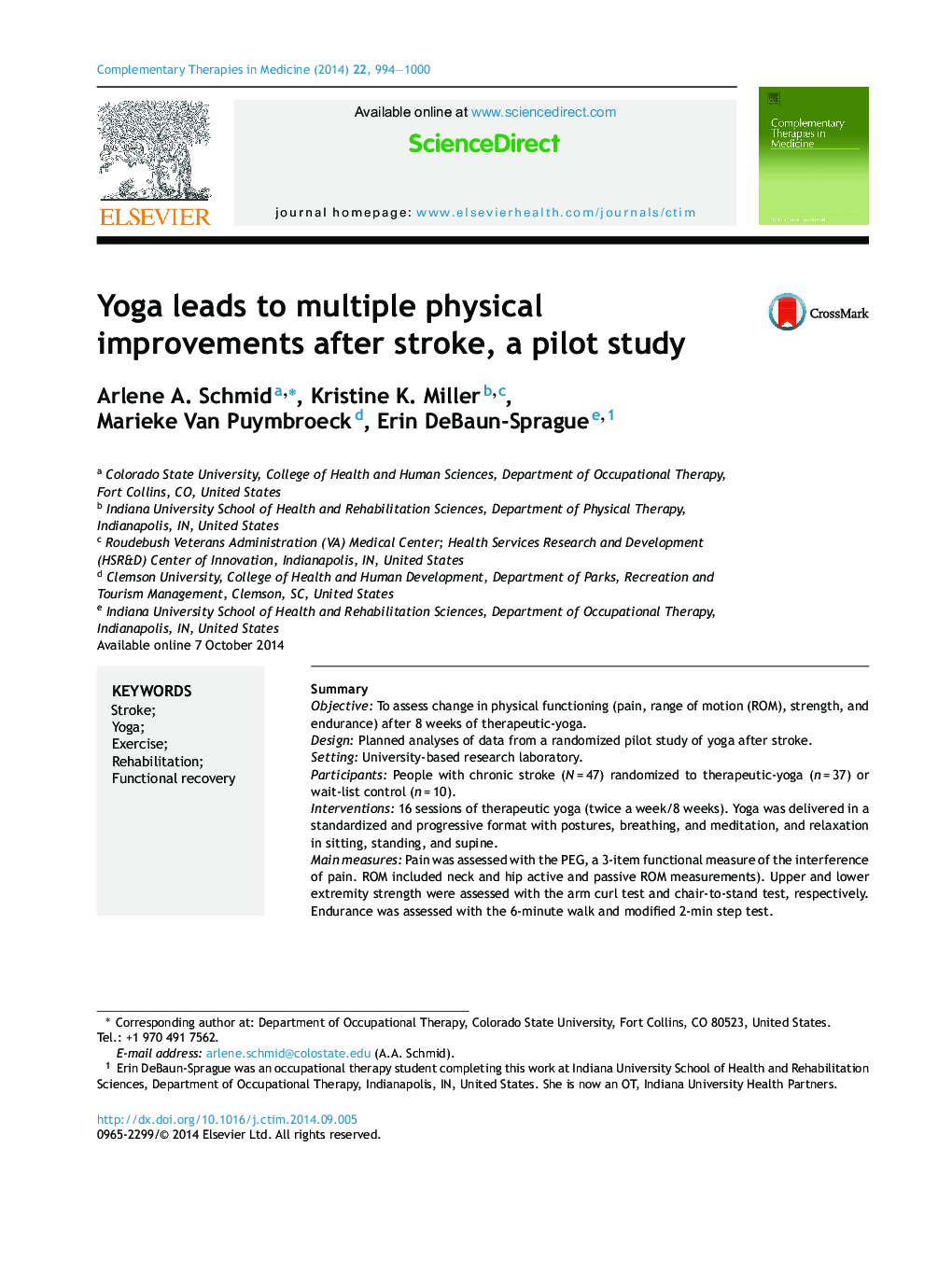| Article ID | Journal | Published Year | Pages | File Type |
|---|---|---|---|---|
| 5865638 | Complementary Therapies in Medicine | 2014 | 7 Pages |
â¢Yoga after stroke may be complementary to rehabilitation.â¢Yoga after stroke improves multiple aspects of physical functioning.â¢Eight weeks of yoga leads to multiple improvements.
SummaryObjectiveTo assess change in physical functioning (pain, range of motion (ROM), strength, and endurance) after 8 weeks of therapeutic-yoga.DesignPlanned analyses of data from a randomized pilot study of yoga after stroke.SettingUniversity-based research laboratory.ParticipantsPeople with chronic stroke (N = 47) randomized to therapeutic-yoga (n = 37) or wait-list control (n = 10).Interventions16 sessions of therapeutic yoga (twice a week/8 weeks). Yoga was delivered in a standardized and progressive format with postures, breathing, and meditation, and relaxation in sitting, standing, and supine.Main measuresPain was assessed with the PEG, a 3-item functional measure of the interference of pain. ROM included neck and hip active and passive ROM measurements). Upper and lower extremity strength were assessed with the arm curl test and chair-to-stand test, respectively. Endurance was assessed with the 6-minute walk and modified 2-min step test.ResultsAfter a Bonferroni Correction, pain, neck ROM, hip passive ROM, upper extremity strength, and the 6-min walk scores all significantly improved after 8 weeks of engaging in yoga. No changes occurred in the wait-list control group.ConclusionsA group therapeutic-yoga intervention may improve multiple aspects of physical functioning after stroke. Such an intervention may be complementary to traditional rehabilitation.
